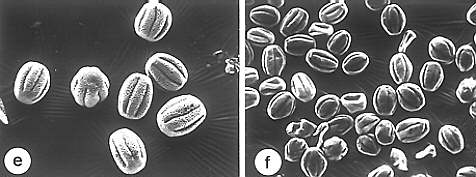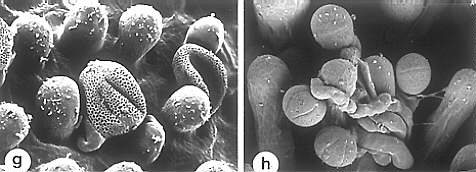

a: Stigma of the long-styled type. b: Pore on the surface of the stigma (between papillae). It was caused by a penetrating pollen tube. The empty pollen sheath has already fallen off.

c, d: Stigma surfaces. c With short papillae (short-styled type), d With long papillae (long-styled type)

Pollen; e: Large pollen (short-styled type), f: Small pollen (long-styled type)

g: Penetration of the pollen tube into the stigma tissue (a compatible combination: pollen of the long-styled and stigma of the short-styled type). h: Repulsion reaction. The pollen tubes grow but cannot penetrate the stigma tissue. They are repelled. They grow disorientated at the surface of the stigma, desiccate finally and wither away
(H.-D. IHLENFELDT, 1986).